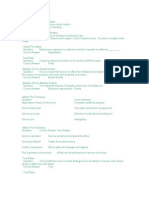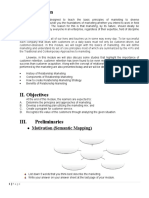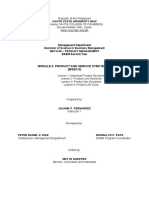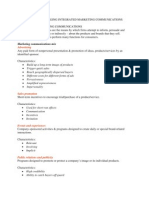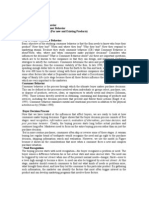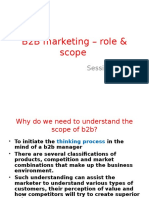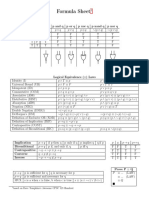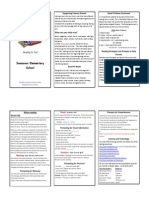0% found this document useful (0 votes)
118 views34 pagesChapter Two: Marcom's Challenges: Enhancing Brand Equity, Influencing Behavior, and Being Accountable
This chapter discusses key concepts relating to brand equity and influencing consumer behavior. It defines brand equity as the value of a brand from both an organizational and customer perspective. From an organizational perspective, brand equity is measured as the revenue premium earned by branded items over unbranded equivalents. The chapter also outlines different forms of brand knowledge including awareness, recognition, recall, and brand image/associations. It discusses branding strategies such as co-branding, ingredient branding, extensions, and sub-branding. The chapter emphasizes that creating brand awareness and image alone is not enough and marketing must influence actual consumer behavior and purchases to be effective, as measured by metrics like return on marketing investment.
Uploaded by
Dena RashidiCopyright
© Attribution Non-Commercial (BY-NC)
We take content rights seriously. If you suspect this is your content, claim it here.
Available Formats
Download as PPT, PDF, TXT or read online on Scribd
0% found this document useful (0 votes)
118 views34 pagesChapter Two: Marcom's Challenges: Enhancing Brand Equity, Influencing Behavior, and Being Accountable
This chapter discusses key concepts relating to brand equity and influencing consumer behavior. It defines brand equity as the value of a brand from both an organizational and customer perspective. From an organizational perspective, brand equity is measured as the revenue premium earned by branded items over unbranded equivalents. The chapter also outlines different forms of brand knowledge including awareness, recognition, recall, and brand image/associations. It discusses branding strategies such as co-branding, ingredient branding, extensions, and sub-branding. The chapter emphasizes that creating brand awareness and image alone is not enough and marketing must influence actual consumer behavior and purchases to be effective, as measured by metrics like return on marketing investment.
Uploaded by
Dena RashidiCopyright
© Attribution Non-Commercial (BY-NC)
We take content rights seriously. If you suspect this is your content, claim it here.
Available Formats
Download as PPT, PDF, TXT or read online on Scribd
/ 34


